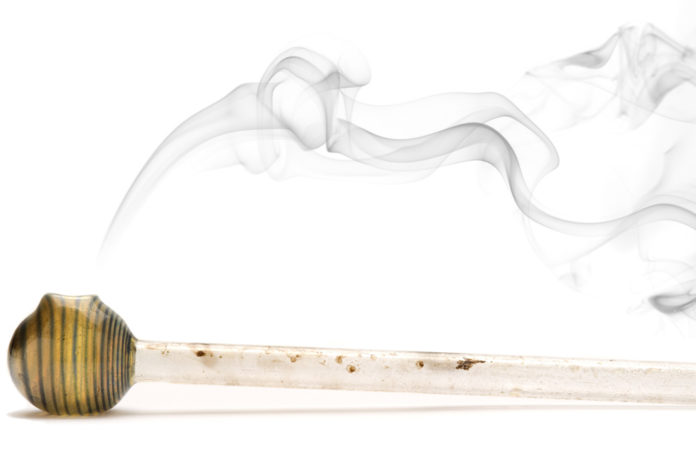Crack is among the most addictive substances being used in the world today.
Crack addicts have found that rehabilitation can be longer than the normal 28-day stay in rehab. The crack cravings usually go on for months after the last intake and something that would be useful to the user would be a change in environment.
Crack is a harder version of cocaine and is illegal. Crack is smoked unlike cocaine, which is snorted. This process sends the highness almost directly to the brain and causes an intense craving as well as dependence. Crack is very addictive just like cocaine and to break the habit, the user will need rehabilitation.
How long it will take for rehabilitation, is one of the most frequent questions users ask. The answer to that question is somewhat unknown, as there can be no definite answer. The user’s needs will determine the duration of rehabilitation. This is because medical professionals will have to examine the user in order to know the intensity of their addiction and then come up with a suitable schedule to treat the user based on those results.
DURATION OF REHABILITATON
A couple of various programmes exist for treating crack addiction. The length of these programmes differ, based upon the user’s needs. Examples are stated below.
- Crack rehabilitation for short-term inpatient; length of program is from 1 month to 3 months – such programmes are usually run from 1 month to 3 month and are referred to as short-term. They are constructed to take care of users who have a mild to moderate addiction, also known as casual users.
- Crack rehabilitation for long-term inpatients; duration ranges from 3 months to 2 years – this programme takes nothing less than 3 months or more to complete. A few of the programmes can extend beyond a year or more. They have been constructed to help users who are suffering from moderate to severe addictions or who are in need of an environmental change for them to proceed in the recovery process.
- Crack rehabilitation for outpatient; the duration spans from 12 weeks to 16 weeks – in this programme, the addicts are not required to be in the rehab centre. However, they would have to come weekly to attend some sessions for treatment. The average time it will take to go through an intensive program for the outpatient goes from 12 weeks to about 16 weeks.
LONG TERM VERSUS SHORT TERM CRACK REHABILITATION
When considering if a user will require a long term or short term treatment, it is best to consult a professional to help decide. This is because of the extensive knowledge they possess in coming up with a plan made specifically for the user. Examples of such professionals include:
- Psychologists
- Psychiatrists
- Certified counsellors for addiction
- Specialised addiction doctors
- Social workers who are clinically licensed
Casual users of crack can go for short-term rehabilitation treatment. But considering that crack is a very addictive drug, long- term treatment is required in most cases. The long-term treatment programme is more beneficial to both habitual and casual users.
AVERAGE TIME FOR CRACK REHABILITATION
It takes about one month to complete a regular inpatient rehab treatment. When it is crack, rehabilitation programmes vary, spanning from a month to a year or more. The longer the time spent in rehab treatment, the better it is for the crack patients as they stand to benefit from it in a number of ways.
- Changing environment – for impatient rehabilitation, the crack users move to the rehabilitation centre, this is to enable them take part in daily group and individual therapy sessions, as well as educational sessions. Being present in the rehabilitation facility while undergoing treatment is a great benefit for the patient compared to those who are not present (outpatients). This provides the users with a change in environment which is a vital part of recovering.
- Access to therapy – recovering users who are available at the facility also have the opportunity to engage in an intensive therapy everyday as it is much needed. This is to help the behaviours of the addicts and treat any underlying mental sickness.
- Peer support – being present helps the user to be associated with various people who have recovered and others who are still on their way to recovery. It gives them an opportunity to build themselves up while in a group, rather than walking the road alone.
TIMELINE FOR CRACK REHABILITATION
Users of crack usually pass through the same processes and stages while undergoing treatment, not minding which programme they are involved in. A typical timeline for rehabilitation is shown below.
First assessment and screening – this is usually the first step involved in the rehabilitation process. It could take some hours to conclude and is carried out to determine a user’s plan for treatment.
Medical detox is the second step – users who suddenly stopped using crack usually experience withdrawal, and could have symptoms like depression, fatigue, irritability, anxiety and cravings for crack. To reduce the possible chance of a relapse and carry out detox safely, the addicts are advised to enroll in a medical detox plan. This makes sure they get a 24-7 monitoring to help address the main issues, most importantly those linking to suicide thinking during the withdrawal.
At the moment medical researchers are yet to come up with an approved medication for the treatment of both acute detox and monthly cravings stage of crack addiction. However, alternative measures such as using medications meant for other ailments have helped in treating crack addictions. Antidepressant or anti-anxiety medications can also be prescribed by doctors for short term treatment.
Psychological treatment – the two main psychological therapies for crack addict’s rehabilitation are group therapy and individual therapy and they are to be maintained throughout the rehabilitation period. Family therapy is also advisable to assist in building back family bond and create better understand between the addict and the family members during the recovery period.
Aftercare program – an aftercare programme is very important for successful integration of addicts back in to the society from the rehab. On an out patient basis it is also advisable for them to continue their pharmacological and psychological treatment while going through the aftercare stage. Rehabilitation facilities will be of great help to recovering addicts in order for them to remain drug-free as they receive supportive services or be referred to other organizations that proffer useful supportive services for addicts.
Getting over crack is always possible, but not easy. It takes determination, hard work and time.
Article Submitted on behalf of drugrehab-surrey.uk and alcoholrehab-surrey.uk









